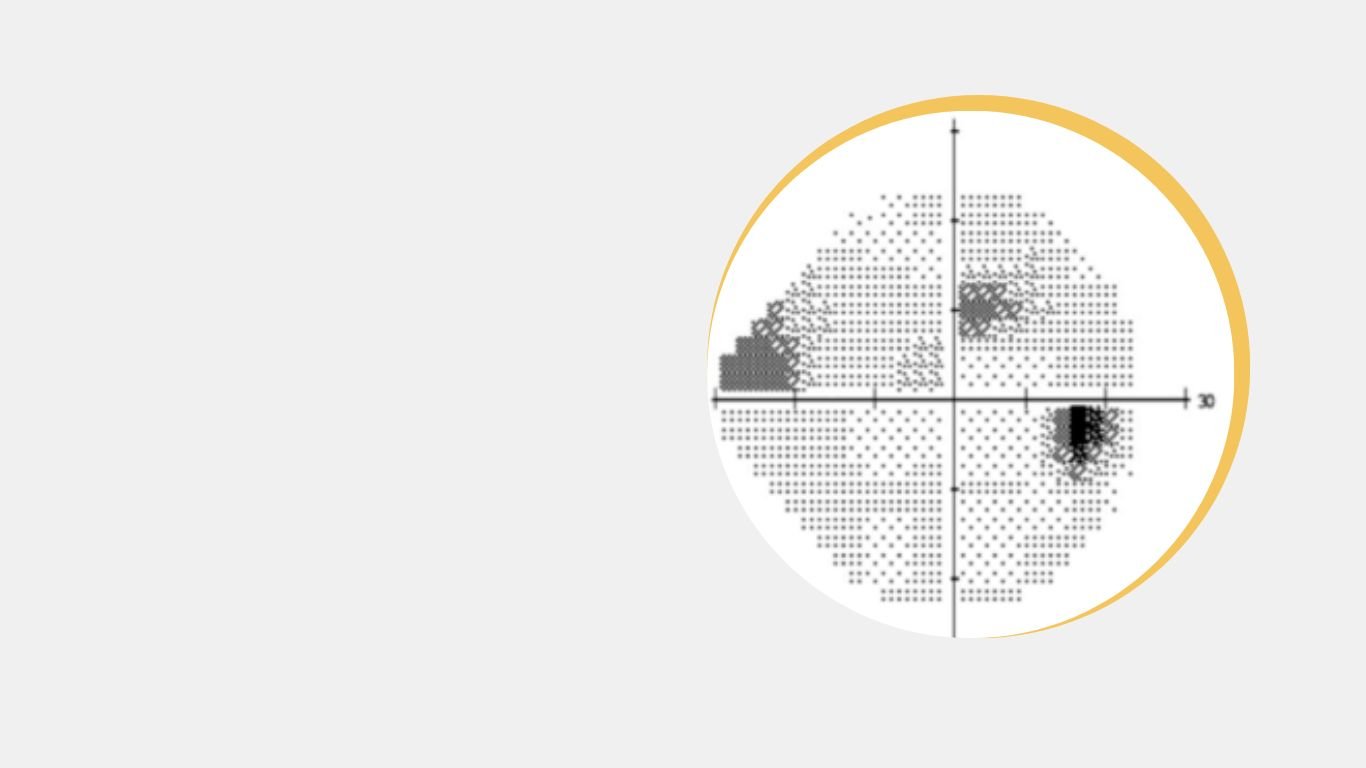
Visual Field Testing
What is visual Field Testing?
A visual field test tells your eye doctor about your peripheral vision or how much you can see out of the corners of your eyes. This is different from your visual acuity, which tells your eye doctor what you see out of the centre of your eye. Visual field testing can help to identify potential problems with the retina, optic nerve, and other parts of the visual system. Tests are quick and easy to administer and provide valuable information about the full scope of your eyesight.
Standard visual field tests include confrontation visual fields, automatic or computerized static perimetry, kinetic perimetry, frequency doubling and central Amsler grid testing.
What Can a Visual Field Test Detect?
Visual field testing is an essential tool used by optometrists for assessing and diagnosing a variety of eye conditions. Visual field testing is routinely used in the following areas to both diagnose and monitor the effectiveness of the treatment:
Glaucoma
Thyroid Eye Disease (Grave's Disease)
Stroke
Certain Medication Side-Effects: Plaquenil or Hydroxychloroquine.
Multiple Sclerosis
Reduced Visual Acuity
Retinal Detachment
Headaches
What Happens During a Visual Field Test?
As we just noted, there are several types of visual field tests. Still, they all have one thing in common: the patient looks straight ahead at one point and signals when an object or a light is seen somewhere off to the side. In addition, some visual field tests only look for a specific response level. In contrast, others perform a threshold test where the object or target may change in size or intensity.
It's easy to become distracted during a visual field and want to look at the object. Still, it's essential always to look straight ahead and follow the staff's instructions. As you take more visual field tests, your testing will improve, and the information gained will be more accurate.
FAQ’s | Visual Field Testing
-
Most visual field tests can be completed within 10-20 minutes and can be performed before or after your eye exam.
-
Visual field tests are used to both diagnose and monitor an eye condition. The first time you take a computerized visual field test, you may make more errors or be prone to testing errors. As such, the test must be repeated to ensure accuracy. Your optometrist might also recommend that a visual field test be retaken in a few weeks, a few months, or a year. Some conditions, such as glaucoma, require routine visual field tests to ensure the effectiveness of your treatment.
-
Yes and No. For all medically necessary testing, visual field testing is usually covered. Still, a maximum number of tests can be performed annually, after which standard professional fees may apply. Alberta Health Care does not cover visual field testing for occupational health and safety forms and driver's licenses; standard professional fees apply.
Computerized Visual Field Testing for a Drivers License.
To get a driver's license or renew your driver's license in Alberta, you may require a comprehensive eye exam by an optometrist or ophthalmologist. Often, this eye exam needs to include a full-static threshold visual field test.
Visual field testing is required when an eye condition may impair your ability to operate a vehicle safely because of a visual field loss or scotoma. This includes central and peripheral field loss or scotomas.
The current visual field standard in Alberta is as follows:
Class 1: Professional
Visual Field = 150 continuous degrees horizontally and 20 degrees above and below fixation vertically
Class 2: Professional Bus
Visual Field =150 continuous degrees horizontally and 20 degrees above and below fixation vertically*
Class 3: 3 Axle Plus
Visual Field =150 continuous degrees horizontally and 20 degrees above and below fixation vertically*
Class 4: Professional - Ambulance/Emergency
Visual Field = 150 continuous degrees horizontally and 20 degrees above and below fixation vertically*
Class 4: Professional - Taxi
Visual Field = 120 continuous degrees horizontally and 20 degrees above and below fixation vertically*
Class 5: Standard License
Visual Field = 120 continuous degrees horizontally and 15 degrees above and below fixation vertically*
Class 6: Motorcycle & Moped
Visual Field: 120 continuous degrees horizontally and 15 degrees above and below fixation vertically*
Class 7: Learners
Visual Field: 120 continuous degrees horizontally and 15 degrees above and below fixation vertically*
If a complete homonymous hemianopsia is detected, that individual is automatically disqualified from holding any driver's license level. Partial hemianopsia or quadranopsia are based on individual circumstances and may be eligible to hold a driver's license. However, further testing may be required.

